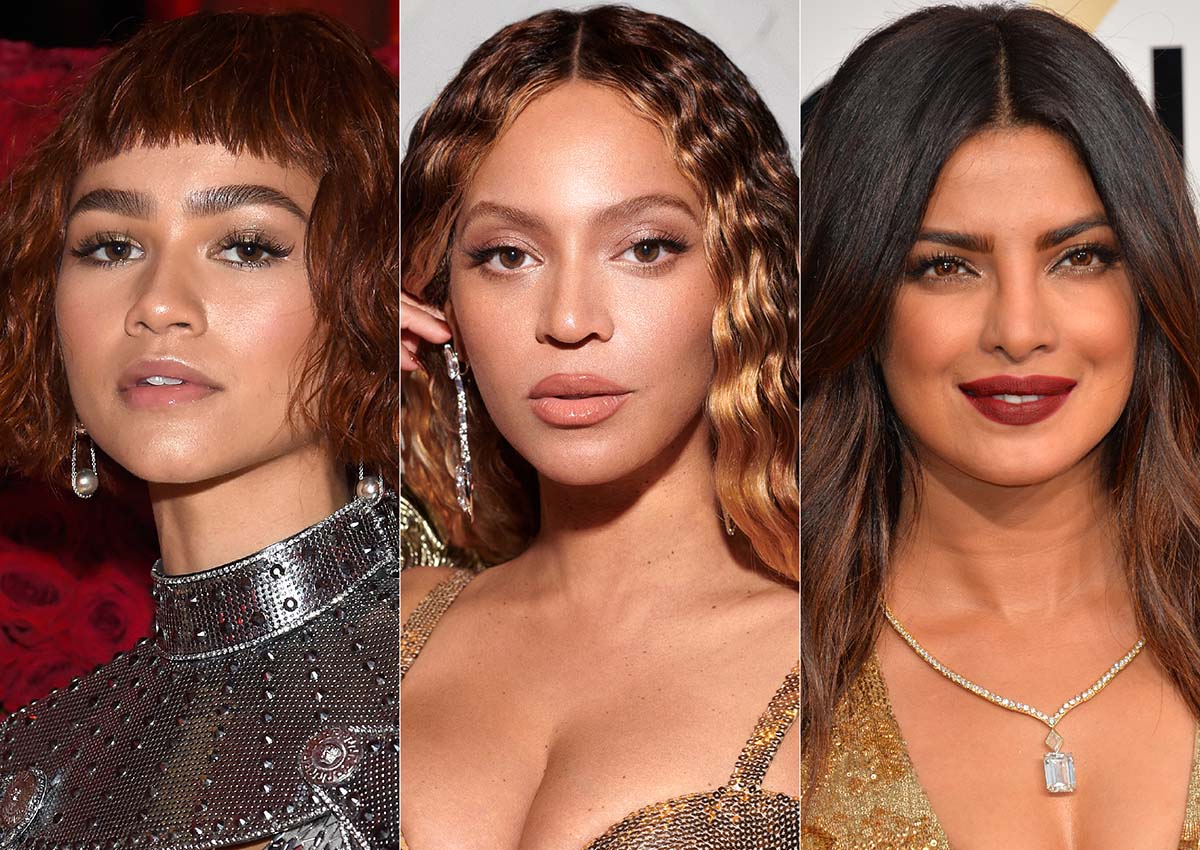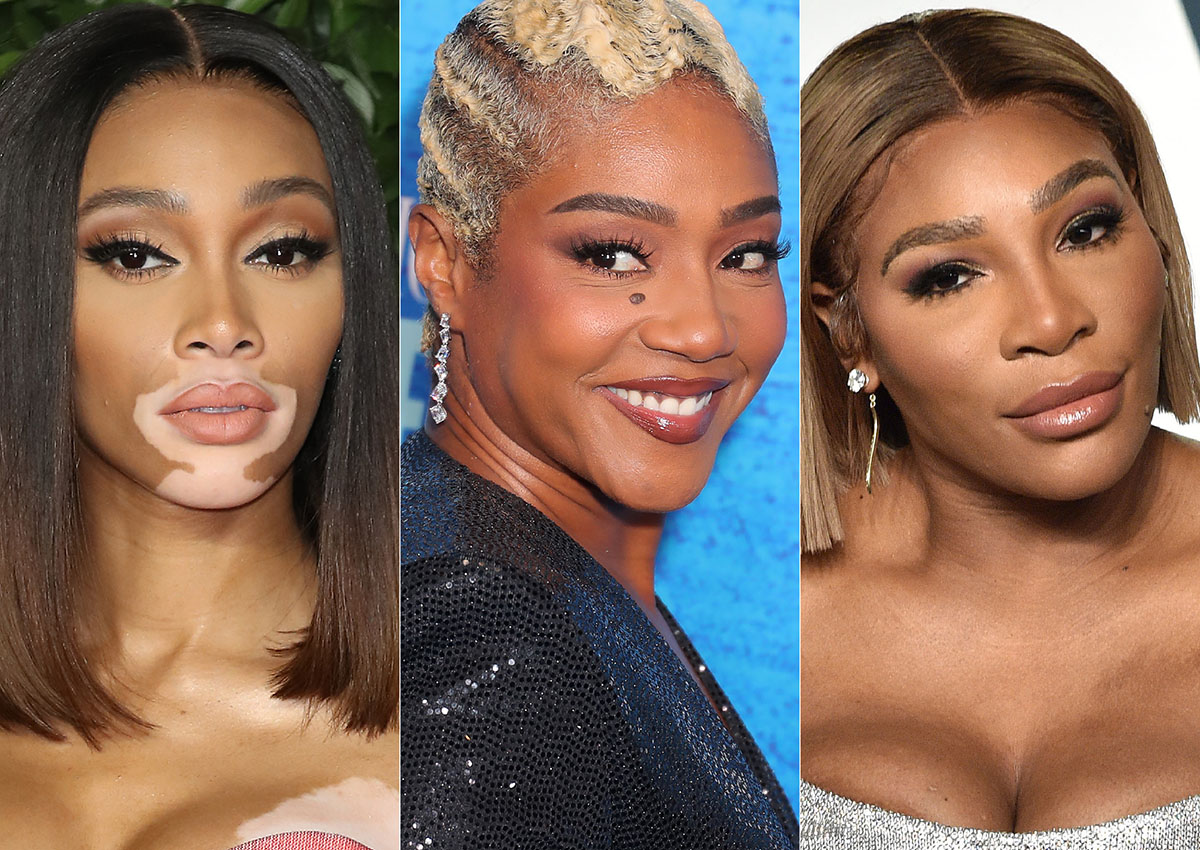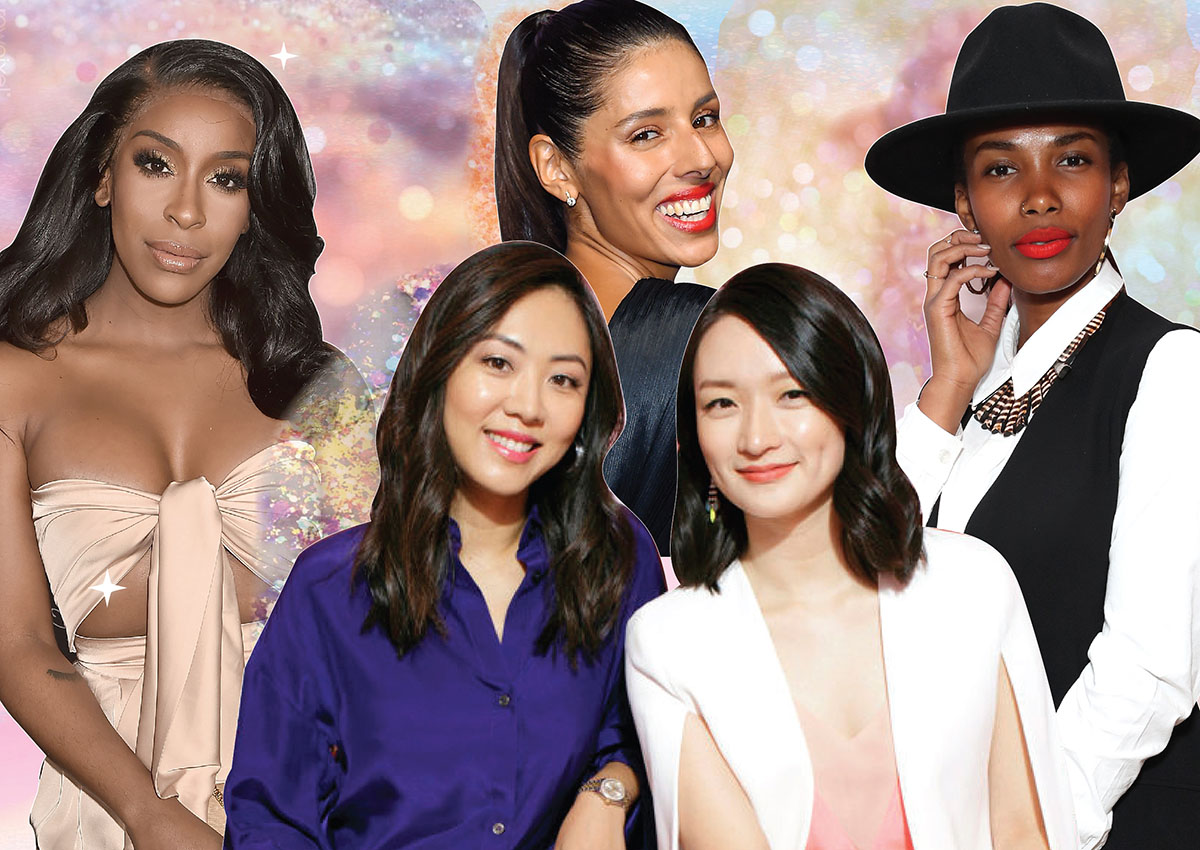What Hair Color Looks Best On Me? And The Best 3 Apps
 Source: Kevin Mazur/Getty Images
Source: Kevin Mazur/Getty Images
Ever looked back at your hair color in an old snap and thought, “WTF was I thinking?” Well, if you’ve been victimized by the #10YearChallenge, then it’s definitely a possibility – that yellow blonde of the 09s has been haunting us all week! But all jokes aside, your hair color can completely change the vibe of your look, so there are a few things to consider before taking the color plunge.
Dying your hair isn’t always as simple as it seems! Are you willing to deal with the upkeep if you’re going drastically darker (or lighter)? Does your hue of choice work with your current texture, skin tone, and level of hair health? These can be life-changing questions – okay, so maybe that’s a little dramatic – but these are pretty major beauty questions to ask yourself. So, we turned to the pros for their top hair coloring tips to help you in your journey to #LivingYourBestLife and #HairGoals.
Your Step-By-Step Guide to Choosing a New Hair Color
Before you rush to the salon with saved Insta posts of your celeb hair color crush, just hold on a hot second. Karl Walner, Assistant Manager and Artistic Director at Pastels Salon Dubai, says, “You need to look at eye color, skin tone, and natural hair color… [and] consider lifestyle and budget” before choosing a new hair color. To make it easier, here’s what to keep in mind before choosing a new hair color:
1. Start With Your Skin Tone
 Source: Taylor Hill/Getty Images
Source: Taylor Hill/Getty Images
According to Courtney Goebel, eSalon expert colorist and education lead, the most important thing when choosing a hair color is making sure the shade(s) complement your undertone. “To determine what will work, you need to know if you have a warm, cool, or neutral undertone, and one easy way to find out is to look at your veins,” she advises. If your veins are purple or blue, you’re cool; if they’re greenish, you’re warm; if you’re seeing both, you’re most likely a neutral tone. Still confused? Check out our guide to figuring out your undertone here.
Pro tip: Look at your bling! Tommy Drury, hair tech at Jo Hansford Salon London, says, “It’s worth considering what color jewelry, makeup, clothes you’d wear, as clients often know what suits them whether they realize it or not.” If you’re obsessed with gold jewelry and feel like it brings out your glow, chances are you’re warm-toned. On the other hand, silver suits cooler skin tones. If your skin looks great in both, and you can’t notice a major difference, you’re probably neutral.
2. Know What Colors Flatter You Most
View this post on Instagram
Tommy explains the color theory here: “Warm hair colors generally complement warmer skin, cool hair colors generally complement cooler skin. With this in mind, flipping this rule allows for contrast.”
Goebel agrees, “Once you know your skin’s tone, pick a hair color that’s the opposite – so for cooler skin, we recommend ash, cool beige, or coppery-red tones to bring out your natural blush, and for warmer skin, try golds, warm beiges, chocolatey brunettes, and mahogany reds to get that glowy, highlighted finish.” If you have a neutral skin tone – you’re lucky; you can easily transition from cool to warm and vice versa.
BTW, Tommy says that “When considering whether to go lighter or darker, it’s important that it’s maintainable and won’t compromise the hair’s condition. If your natural color is considered [by professionals] to be in the blonde range, then I’d be wary of going more than two shades darker. This isn’t just about the optics; it’s about how blonder hair structures hold pigment.”
3. Consider Your Lifestyle
Maintaining (faux) hair color is no easy feat when everything between your styling tools and chlorinated water actively works against it – yup, even with highlights! Amelie Lemoine, a stylist and colorist at Yves Durif Salon in Manhattan, New York, explains, “The upkeep for highlights really depends on how far you deviate from your natural base.”
She continues, “For example, if you already have a dark starting base color that drastically contradicts the brighter highlights, you will need to go to the salon for more frequent touch-ups every three to four weeks.” And if you have grays, then you’ll also have to get your roots touched up every two to three months.
If going to the salon to refresh your color and splashing on upkeep isn’t the vibe, Lemoine loves the ombre-balayage look for their low-maintenance appeal. “First, you can utilize your natural color with the enhancements of highlights strategically located on the ends to complement your skin tone, and if you’re budget-conscious, this is the perfect type of color as it doesn’t require frequent touch-ups,” she adds.
4. Take the Seasons into Account
 Source: Dave Benett/Getty Images & Jeff Spicer/Getty Images
Source: Dave Benett/Getty Images & Jeff Spicer/Getty Images
Marie-Antoinette Martinez, a colorist at Frédéric Fekkai Salon at The Mark Hotel in NYC, preaches the importance of seasonal awareness when it comes to dyeing your locks. “How much sun your hair is exposed to offers clues as to what type of processes your hair can handle,” she says. So sun worshippers, beware, if your hair is already in need of TLC, you may not be able to do a complete overhaul.
If your hair is on the healthy side, however, Martinez recommends going for “richer, warmer tones in the winter and brighter and lighter in the warmer months.” After all, if your hair already looks unhealthy, dying or bleaching it will never improve it.
5. Schedule Your Cut Before Color
“Color always looks more impactful on freshly cut, well-maintained hair, and your texture plays a big role in deciding what type of service to perform,” says Martinez. “Some haircuts might look great with a solid color with little dimension, while others with a lot of dimension enhance layers.”
Translation: cut before color always, and make sure you speak to your stylist and colorist before both services, so everyone’s on the same page. For example, if you have your hair cut and colored to work with a naturally curly state but always style it straight, those are things they should know upfront.
What Hair Colors Suit Your Skin Tone Best
Now for the fun stuff – choosing hair colors! While you’re free to choose ANY color out there, Tommy and Karl share their recommendations on what shades work best for fair to rich skin tones. So, whether you have warm or cool undertones, you can find the color that will work best for you based on your natural hair color. Ready to screenshot?
Hair Colors for Fair Skin Tones
 Source: The Chosunilbo JNS / Contributor, Manny Carabel/Getty Images, Mike Marsland/WireImage
Source: The Chosunilbo JNS / Contributor, Manny Carabel/Getty Images, Mike Marsland/WireImage
Fair with Cool Undertones: “If hair is naturally blonde, then cooler, icier tones compliment really well; going darker though will require more warmth. Strong coppers and reds also work,” Tommy tells us.
Fair with Warm Undertones: Tommy explains that “If hair is naturally blonde, then warmer blondes (creamy, honey, strawberry) are best suited. If hair is naturally more brunette, then warmer and cooler shades work really well too.”
Karl says that fair skin “can go very bold – for instance, extreme light or extreme dark to have it contrast with your skin” if you have neutral undertones. He recommends shades like platinum blonde or ebony black and suggests staying away from anything golden.
Hair Colors for Light Skin Tones
 Source: Steve Granitz/WireImage, Dimitrios Kambouris/Getty Images, Lionel Hahn/Getty Images
Source: Steve Granitz/WireImage, Dimitrios Kambouris/Getty Images, Lionel Hahn/Getty Images
Light with Cool Undertones: “Neutral to cool colors are great; champagne blondes are perfect. Avoid going to the extreme end of the ash colors as this can make the skin look greyish.”
Light with Warm Undertones: “Always stay warm; the coolest blonde would be a beige tone unless brightening to a creamy vanilla blonde.” However, Tommy warns not to go too dark if you’re naturally blonde and recommends not to drop more than two shades, keeping the tone warm.
Hair Colors for Light Medium Skin Tones
 Source: Kevin Mazur/Getty Images, Theo Wargo/Getty Images, Axelle/Bauer-Griffin/FilmMagic
Source: Kevin Mazur/Getty Images, Theo Wargo/Getty Images, Axelle/Bauer-Griffin/FilmMagic
Light Medium with Cool Undertones: Tommy says that most hair colors suit this skin tone but recommends veering away from anything too yellow in tone if going lighter – think gold and honey shades.
Light Medium with Warm Undertones: If you want to stay on the darker side, Tommy recommends choosing either warm or cool tones. But if you’re going light, he recommends steering away from cooler shades. He believes that “honeys work wonders on this skin tone” while “chocolate colors can work well to enhance the skin’s natural warmth.”
Hair Colors for Medium Skin Tones
 Source: David Crotty/Patrick McMullan/ Getty Images, Dave Benett/Getty Images, Jim Spellman/Getty Images
Source: David Crotty/Patrick McMullan/ Getty Images, Dave Benett/Getty Images, Jim Spellman/Getty Images
Medium with Cool Undertones: Tommy says, “Warm or cool brunettes work really well” on this skin tone and suggests avoiding actual red pigments – including mahoganies. If you want to go lighter, he advises choosing cooler tones “unless you’re going for a statement copper/strawberry. The golden tones will appear much more yellow against your skin.”
Medium with Warm Undertones: “Stick to the brunettes, ideally warm. If you’re looking for a blonder look, then caramel tones are great. If you want to push it that bit lighter, then opt for beige, but you must keep the brunette-to-blonde ratio in check,” explains Tommy.
Hair Colors for Medium Tan Skin Tones
 Source: Featureflash Photo Agency, Jemal Countess/FilmMagic, Karwai Tang/Getty Images
Source: Featureflash Photo Agency, Jemal Countess/FilmMagic, Karwai Tang/Getty Images
Medium Tan with Cool Undertones: Tommy says, “It’s likely your hair is dark, so when going lighter, you must use GREEN bases to neutralize red tones. Alternatively, deliberate (not brassy) red tones can look striking.”
Medium Tan with Warm Undertones: “Stay warm. Similarly to other skin tones, going blonder is still very much an option, but avoid cool tones,” adds Tommy.
Hair Colors for Tan Skin Tones
 Source: Kevin Mazur/Getty Images, Mason Poole/Getty Images, Featureflash Photo Agency/Shutterstock
Source: Kevin Mazur/Getty Images, Mason Poole/Getty Images, Featureflash Photo Agency/Shutterstock
Tan with Cool Undertones: Tommy elaborates, “Brunettes always look classy; if you wanted to go lighter and see more brown, then you still need to stay on the cool side. Too much warmth can make the hair look false.”
Tan with Warm Undertones: He continues, “Chocolates and mahoganies always look healthy on this skin tone. Add some caramel pieces to create variation.” He also says that cool browns can work, but to be wary because they don’t always appear to be the most exciting color choice.
Karl adds that hunnies with medium to tanned skin “should choose luxurious caramel or honey tones but keep darker roots, as this will look the most flattering.”
Hair Colors for Deep Tan Skin Tones
 Source: Neil Mockford/FilmMagic, Leon Bennett/Getty Images, Lionel Hahn/Getty Images
Source: Neil Mockford/FilmMagic, Leon Bennett/Getty Images, Lionel Hahn/Getty Images
Deep Tan with Warm Undertones: Tommy says “Working with the warm undertone of your skin will never look bad, and you can gradually go lighter with caramel, honey, and beige pieces.” He recommends “lighter, more blonde hair if [your hair] condition allows it.”
Deep Tan with Cool Undertones: Tommy agrees that “Mahogonies and chocolates match really well with this skin tone” and suggests picking “purple-based colors rather than blue.” He continues, “If going lighter isn’t too much of a risk to the hair’s integrity, then medium ash blondes will make more of a statement.”
Hair Colors for Rich Skin Tones
 Source: O’Connor/Shutterstock, Mike Marsland/WireImage, David M. Benett/Dave Benett/Getty Images
Source: O’Connor/Shutterstock, Mike Marsland/WireImage, David M. Benett/Dave Benett/Getty Images
Rich with Warm Undertones: Tommy says he loves light or very deep colors, but recommends choosing a flattering red hue if you opt for a mid-tone shade.
Rich with Cool Undertones: “Cooler, blue-based brunettes will look seamless” on this skin tone. But if you choose to go lighter, “it’s important to subdue the natural warmth that comes through [and] find a balance between neutralized warmth and an actual ash look,” he says.
How to Choose & Maintain Bright Hair Colors?
View this post on Instagram
Say, you wanna break the rules to experiment with bold pinks, vibrant greens, or anything in between. Karl’s advice? “Don’t do it by half measures; go full whack. Be confident and rock it! As long as it suits your personality, who’s to say you can’t do bold?”
If going bright, Tommy says, “One of the best ways of making it work is on top of a balayage look. This means that the first color (from the root), whether natural or not, will help anchor the result. Keep to the rules for the first four inches, and you can get away with most colors through the rest.”
Post-Color: Be Consistent With Maintenance
 Source: Jason LaVeris/Getty Images & Donato Sardella/Getty Images
Source: Jason LaVeris/Getty Images & Donato Sardella/Getty Images
Post-color maintenance is a lifestyle. According to Tommy, it’s “about keeping the hair as healthy as possible [with] regular hair cuts, limited heat, and using the right products.” Agreed. He continues, “Not all colors require specific color products, though. If you’re combatting frizz or strive for volume, then you should prioritize these over color protection or use a combination of both.” He recommends the Oway color protection range if your hair “tends to fade more than others” or “if you’ve had a color change (blonde to dark) or correction.”
Garnier celebrity colorist Nikki Lee works with mega babes like Sarah Hyland, Hilary Duff, and Emma Roberts, and nothing annoys her more than not protecting your new color at home after shelling out big bucks for it in the salon. “A heavy conditioner/ deep conditioning mask will be your new best friend after color, so be sure to use one every time you wash, but also try to eliminate how many times you wash per week with really light hair,” she advises.
“Those oils you produce will actually help your hair stay healthy.” Lee’s mask pick is Garnier Fructis 1 Minute Nourishing Hair Mask, $6, which she says “is great for colored-treated hair because it’s super nourishing and helps boost color vibrancy.”
 Source: Garnier Fructis
Source: Garnier Fructis
Karl adds, “Use a color protect shampoo and conditioner. Heat protection cream or spray is also a must when using heat tools, as heat alters the color. Finally, invest in in-salon treatments.”
Tips for Coloring Your Hair at Home
If you choose to take matters into your own hands and get to dyeing in the comfort of your own bathroom, we won’t blame you. Not only is it seriously cheaper, but at-home color solutions are a lot more advanced these days. Just make sure you know what you’re doing before you whip out the latex gloves.
 via Giphy
via Giphy
“When coloring your hair at home, we recommend going no more than a shade lighter or darker at a time and avoid coloring over previously colored hair, so you don’t overlap,” explains Goebel. “This will help prevent going overly dark, seeing unwanted banding, dryness, or possibly even breakage.”
If you’re not looking to commit and want to try a few different shades, Goebel suggests going with a demi-permanent hair color that lasts between 24 to 28 shampoos, enhancing your allover color without the commitment. “For anyone with more than 25 percent grays, demi won’t give you full gray coverage, but it’s a nice way to play with tones until you decide which looks best,” she explains.
Our Fave Hair Color Apps to Test New Hair Colors
Scared to take the leap? Tommy says that “Beauty tech and AR have come a long way over the years, and these can definitely be helpful to get ideas on what suits you. Bear in mind that these colors might not be achievable or a realistic goal, but your color specialist can advise further.” Testing out new colors using an app may not give you the *exact* color you’re looking for, but it’ll give you a much better idea of what the finished color will look like against your skin tone. Still a win if you’re new to the game!
Here are our four go-to apps:
1. L’Oreàl Style My Hair Pro: Both Karl and Tommy vouch for this one because the color results are based on existing color products. That means if you find something you like, you can get it done – no extra hunting! Psst, we tried it out…

2. Hair Color App: Upload a photo, outline your hair to create a template, and color away to see what you’d really look like with your new ‘do.
3. Hair Color Booth App: This one is similar to the above, but it lets you experiment with some insane shades. So, if you’ve always wondered what your hair would look like in hot pink, this one’s for you!
Karl’s Insider Trick: If apps aren’t doing it for you, try “on wigs if you’re going for a BOLD transformation.” With minimal commitment, it’s the easiest way to stun your besties before a night out.























Leave a comment